Digital Foundry: Hands-on with Rainbow Six: Siege
60fps - with a twist.
Ubisoft's decision to forgo a single player campaign for Rainbow Six: Siege is an odd choice for a series that previously focused on delivering a challenging and in-depth 'campaign' for those wanting to go solo. The fortunes of the series now rest with the online modes in providing the strong concepts and range of content required to satisfy the Rainbow Six fanbase. While it's too early to tell if Ubisoft has succeeded here, the recent beta test shows how the use of the AnvilNext engine and RealBlast technology is used to create tactical shootouts that offer players a wide range of choices to tackling various situations, while also targeting a 60fps update for the main multiplayer mode of the game.
Mounting an assault into a suburban town house, we set charges and blast our way through a boarded-up window before spraying the room with bullets, taking down one unlucky opponent in the process. Here, the use of RealBlast allows for bullet impact physics to procedurally damage parts of the environment, with soft surfaces such as clipboard breaking apart when shot while brick and metals become lined with holes. Explosive changes do more than destroy windows too, allowing players to blast through walls, ceilings and doors, alongside weaker concrete construction elements creating a wealth of smoke and debris in the process. To counter such an aggressive approach to combat, players can reinforce surfaces susceptible to being destroyed with metal barricades, or erect removable barriers during a gunfight. This adds a distinctly dynamic feel to gameplay where no two matches play out in the same way.
These pockets of spectacle in often-tense tactical battles of attrition are deployed equally across all three platforms with matching effects work and lighting. However, as a consequence of having to cram all these effects into a small 16.67ms render-time to hit 60fps, the graphical make-up of the game appears a little mixed in other areas. The lighting model often appears rather flat under certain conditions, while materials rendering often varies, with some surfaces more realistically displayed than others. However, there are some nice touches in play, such as the environmental destruction model that allows for players to smash, shoot, or blow holes through soft walls and ceilings. Chip damage, along with use of various effects including volumetric smoke add to the experience, with the latter providing thick clouds for tactical cover in combat.
In terms of the console betas, the PS4 game arrives with a native 1080p resolution, while Xbox One is pared back to 900p. As such, PS4 gains a clearer image due to the lack of upscaling, though the Microsoft platforms appears pretty similar in lower contrast scenes, due to the effectiveness of the anti-aliasing solution. Edge-smoothing is provided by a post-process algorithm in addition to a temporal sampling component that results in fairly clean quality, but this this does come with a few trade-offs: some blurring is present in motion, while the game takes on a slightly soft look in still scenes. On PC, we opt for 1080p resolution in combination with TAA and temporal filtering for anti-aliasing duties - the game's maximum preset for image quality. This delivers clean looking visuals similar to the PS4 game, but with less softness in still scenes, though temporal blurring is still noticeable in motion.
The core artwork is effectively identical across all three platforms, with differences in texture filtering, LOD streaming, and shadow quality providing the graphical distinctions between each platform. The use of trilinear filtering leads to blurrier ground textures on PS4 (Xbox One uses something akin to 4x anisotropic filtering), while LOD streaming varies on both systems with neither gaining a permanent advantage. Some scenes feature shadows streaming in more slowly on PS4, while normal map and texture details are resolved to a higher degree. PC owners get higher resolution foliage and shadows, further draw distances, and improved texture filtering via the use of 16x AF, but otherwise the core assets and effects work - such as smoke and particles - remain the same as on consoles.
On the whole, there's a sense that the PC version of Rainbow Six receives a more refined presentation than a full-on graphical upgrade designed to take advantage of high-end GPUs. Instead, the only avenues of scalability open to PC owners comes in the form of higher resolutions and more solid frame-rates. One major benefit to this is that both standard multiplayer and Terrorist Hunt modes operate at 60fps, whereas the latter is capped to 30fps on the PS4 and Xbox One. This lends the PC version a greater level of consistency across the different modes, and sees fast, low latency controls preserved across the whole Rainbow Six experience.
And yes, you read that correctly - Rainbow Six: Siege targets two different performance profiles on console, with the standard multiplayer mode operating at 60fps, while the Terrorist Hunt game is capped at 30fps. Both modes share the same maps, and graphical quality is also identical with no changes to levels of detail and the effects-work used - the baseline visuals are still budgeted around hitting 60fps, and yet, there's a big performance downgrade here. According to Ubisoft, Terrorist Hunt operates at a lower frame-rate due to this mode featuring advanced AI - far from acting like mindless drones, on higher difficulty settings, your opponents take time to put up barricades, place barbed wire around possible entry points, and set-up charges to destroy the environment to their advantage, in addition to shooting down players from behind boarded up windows or wooden doors. Enemies are clear a step up from the usual cannon fodder encountered in many FPS titles making combat eventful, though it's a shame that there won't be a well though-out single player campaign in which to take on these adversaries in the finished game.
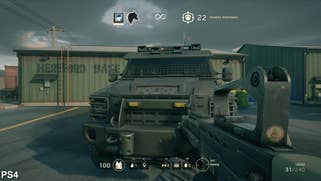

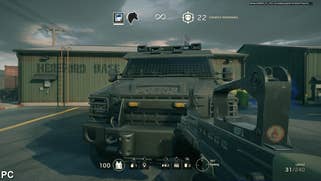
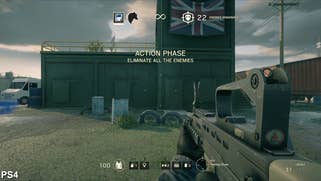
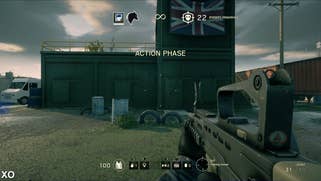
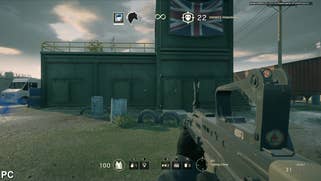
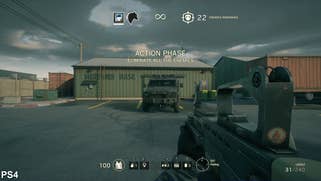
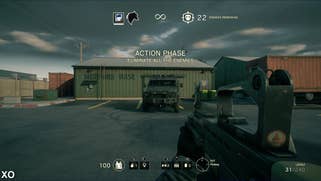

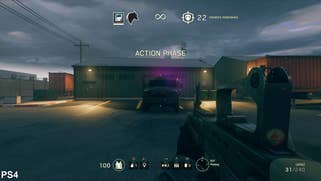
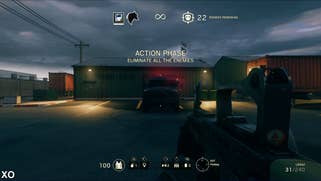
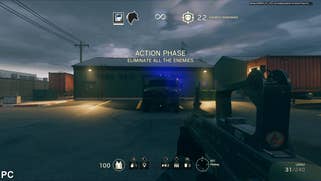

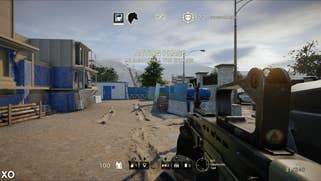
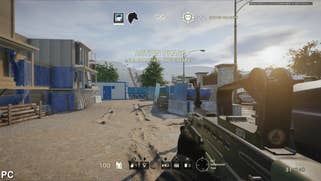
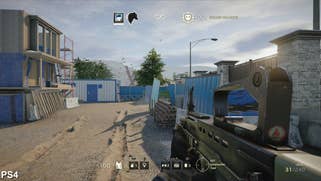
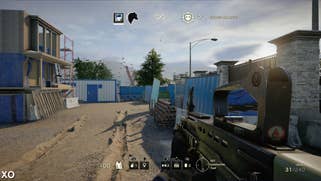
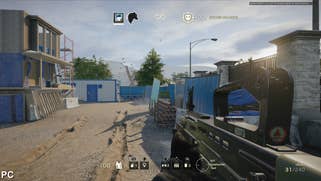

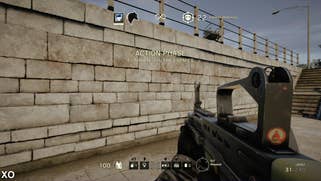

For the most part, Terrorist Hunt manages to run solidly at 30fps across both consoles during gameplay, with performance mostly impacted during the kill cam scenes where control is taken away from the player. At one point we encounter a substantial drop down to 18fps in the Xbox One game, though moments like these tend to be rare and not representative of the usual experience. That said, after playing the main multiplayer mode at 60fps, the drop down to 30fps is readily felt: the reduction in controller response and smoothness is substantial and the experience feels far less fluid and enjoyable to play as a result. After a few matches, it's possible to adjust to the change in motion and the appearance of heavier controls, though the shooting never feels quite as satisfying compared to the regular multiplayer games at double the frame-rate.
In comparison, the standard multi-player PvP mode offers up more refined shooting action: it's here where twitch-based action gels nicely with the game's focus in tactical combat. Fire-fights and explosive encounters sees the game loose it's initially solid 60fps update, with regular excursions between 50-60fps in these moments, and lows hitting around the mid-40s when the engine is more heavily stressed. The use of adaptive v-sync leads to some tearing when frame-rates are impacted, but this often helps to keep controller response at a consistent level despite brief periods where judder is visible in screen. Ubisoft's implementation is mostly successful in keep controller feedback feeling consistent, although there are moments where dramatic variances in frame-times have a short, but tangible effect on precision during shootouts
So far, it appears that Ubisoft has successfully translated the in-depth tactical experience of past Rainbow Six titles into a multiplayer centric game that offers plenty of depth and tactical gameplay variety. The use of environmental destruction (soft walls and ceilings) is a particular highlight, and can often be a game-changer in situations where the defending team is in a well-fortified position. Terrorist Hunt also forms an interesting alternative to the core PvP multiplayer mode that allows for some entertaining solo gameplay against decent AI combatants, although how well it holds up for extended periods in place of a proper campaign is not immediately clear. The drop to 30fps in this mode on consoles also leaves the action feeling less fluid and precise, and offers none of the advantages of a proper single-player campaign.
Overall, Rainbow Six: Siege is shaping up nicely - but it's something of a radical departure from existing entries in the series, and the emphasis on multiplayer could be divisive. That said, 'upgrading' this franchise to 60fps presents a clear, tangible improvement to the gameplay - something we'll explore in more depth soon.





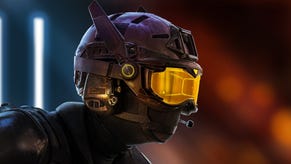
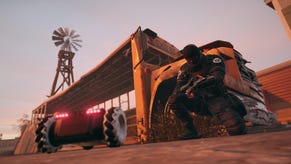


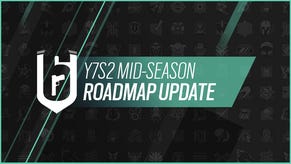






.jpg?width=291&height=164&fit=crop&quality=80&format=jpg&auto=webp)
_Rwmp6uD.jpg?width=291&height=164&fit=crop&quality=80&format=jpg&auto=webp)